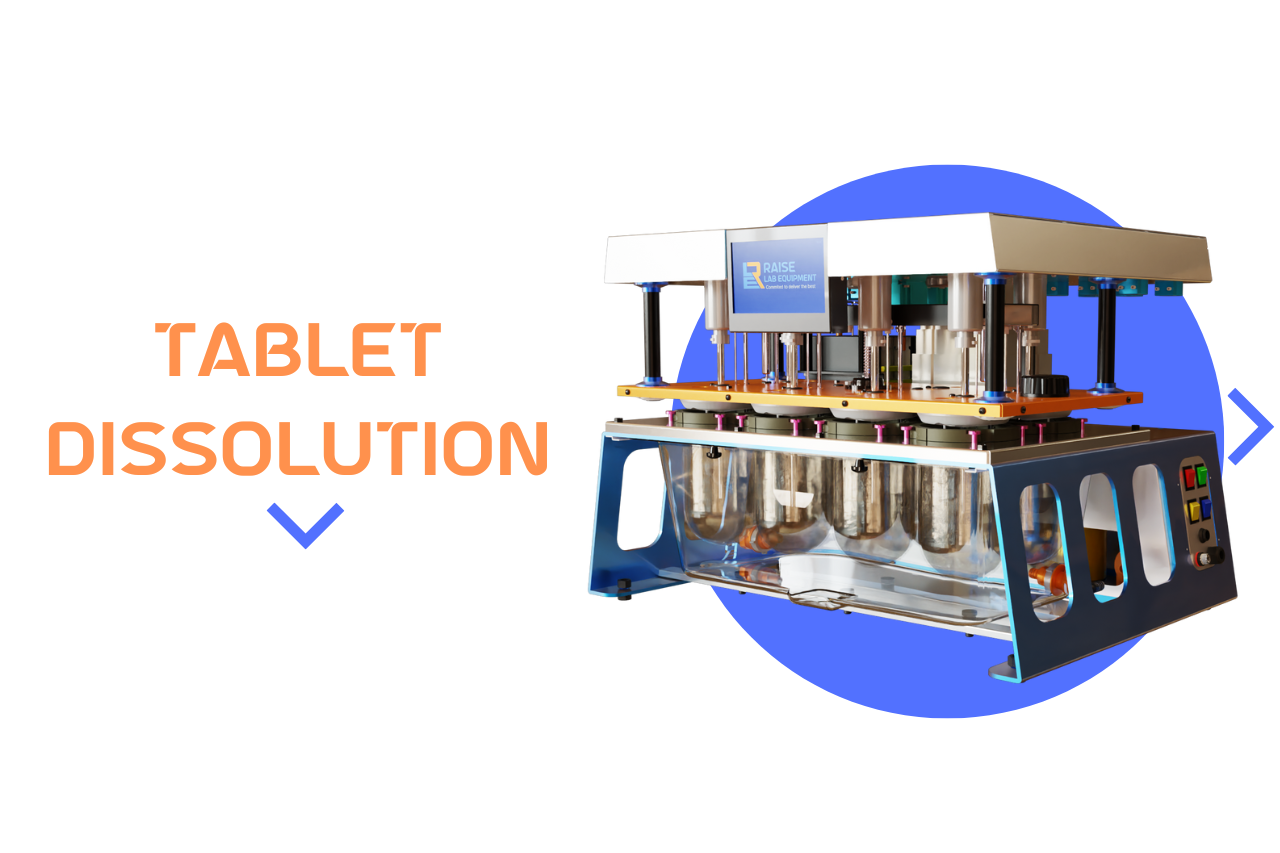Tablet dissolution testing is a cornerstone analytical technique in pharmaceutical drug development and bioavailability studies. It measures the rate and extent at which the active drug substance in a solid oral dosage form (tablet) dissolves into a specified medium under controlled conditions that simulate the physiological environment of the gastrointestinal (GI) tract. This testing profoundly impacts formulation optimization, regulatory approval, quality control, and bioequivalence assessment of pharmaceutical products.
What is Tablet Dissolution Testing?
Dissolution testing evaluates how quickly and efficiently a drug is released from its tablet or capsule form to become available for absorption in the body. The test typically involves placing the tablet in a dissolution apparatus containing a liquid medium, held at conditions such as temperature and agitation that mimic the human GI tract. Samples are withdrawn at predefined times to measure the percentage of the drug dissolved. Different USP-approved apparatus types, such as the Paddle and Basket methods, are selected based on tablet properties to ensure accuracy and reproducibility.
Role in Drug Development
During drug formulation and development, dissolution testing serves as a critical tool for designing and optimizing drug release characteristics. By testing different formulations, excipients, and manufacturing processes, scientists identify the best combination to achieve desirable release rates and bioavailability. It helps in establishing correlations between in vitro dissolution behavior and in vivo drug absorption (in vitro-in vivo correlation or IVIVC), which is crucial for predicting clinical performance without expensive and time-consuming human trials.
This method also supports scale-up and post-approval manufacturing changes by confirming consistent drug release profiles across batches, thereby ensuring therapeutic efficacy and patient safety.
Importance in Bioavailability and Bioequivalence Studies
Dissolution is directly linked to bioavailability, the fraction of an administered drug that reaches systemic circulation in unchanged form. Drugs must dissolve before absorption; thus, dissolution rate often limits bioavailability, especially for poorly soluble drugs. Dissolution testing is therefore used to predict bioavailability and confirm bioequivalence of generic formulations to the innovator drug. It enables regulatory agencies to accept in vitro dissolution data as surrogates for in vivo bioequivalence studies under certain conditions, expediting generic drug approvals and decreasing reliance on costly human studies.
Biorelevant dissolution testing, which uses media that mimic the composition and pH of GI fluids, enhances the predictive power of in vitro tests, further supporting the validity of IVIVC and biowaivers when appropriate.
Application in Quality Control and Regulatory Compliance
Dissolution tests are standard quality control measures to ensure every batch of manufactured tablets meets the required drug release specifications. Consistent dissolution profiles attest to uniform product quality and manufacturing reliability. Regulatory authorities such as the US FDA and USP provide detailed guidelines governing dissolution testing methods, apparatus calibration, media selection, and acceptance criteria. Compliance with these guidelines is mandatory for drug approval and continued market supply.
Challenges and Technological Advances
While dissolution testing is highly informative, challenges include variability caused by test apparatus, media, and testing conditions. Advances in analytical methods such as high-performance liquid chromatography (HPLC) and UV-Visible spectrophotometry enable precise measurement of drug concentrations in complex media. New apparatus designs and the development of biorelevant media continue to improve the physiological relevance, accuracy, and reproducibility of dissolution testing.
Conclusion
Tablet dissolution testing is pivotal throughout a drug’s lifecycle, from formulation development through manufacturing and regulatory approval to quality control and bioequivalence confirmation. Simulating how a drug dissolves in the GI tract ensures drugs are effective, safe, and consistent. With evolving technology and methodologies, dissolution testing will continue to be an essential predictive, regulatory, and quality control tool, enhancing drug development efficiency and patient therapeutic outcomes.


